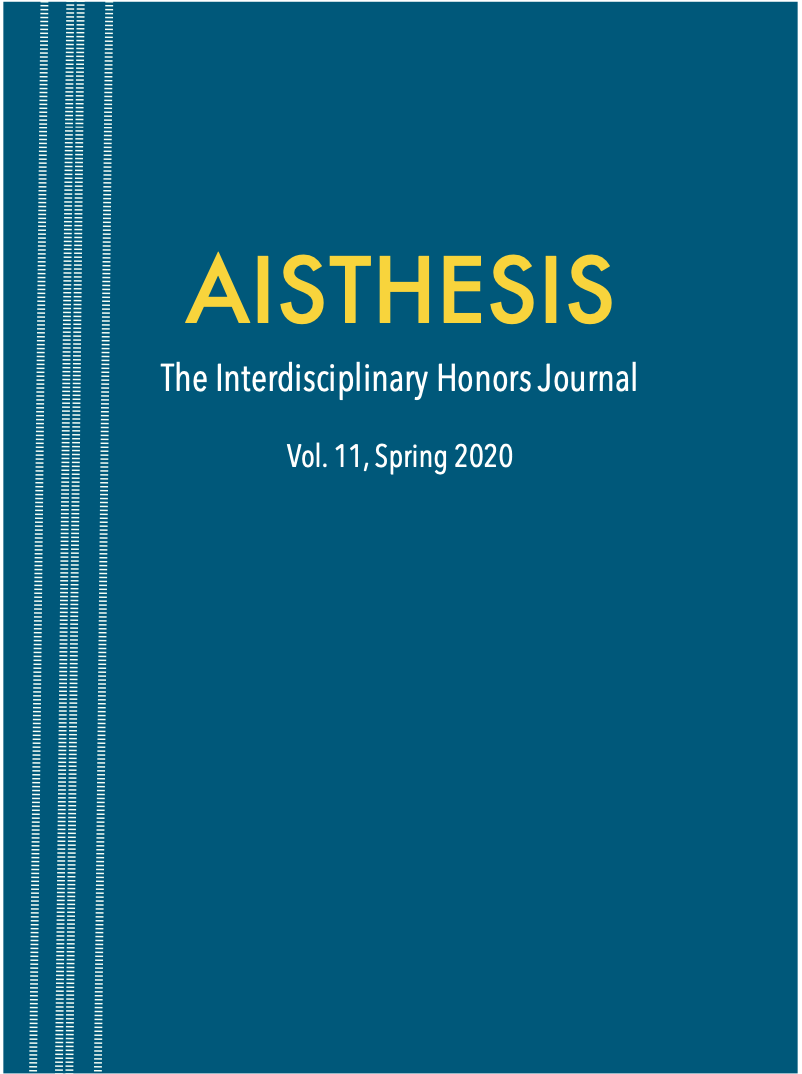Translation in Color, Form, and Tone
Hannah Johnston
University of Kentucky
Abstract
This painted musical composition translates the Fibonacci sequence into color, form, and tone, exploring how a unifying concept can be expressed through many mediums. The Fibonacci sequence is a progression of numbers that often appears in nature. Each term is found by adding the previous two terms, creating a sequence that begins 1, 1, 2, 3, 5, 8, 13, 21, 34, 55, 89,....
Translation is structured in a modified sonata form that uses 8 measure phrases as building blocks. The length of each section of the form is determined by the Fibonacci sequence (i.e., the first section is one 8 measure phrase, the second section is one 8 measure phrase, the third section is two 8 measure phrases, and so forth). Each section is printed on a square that helps the viewer visualize the proportionality of the form.
The melodies are also derived from the Fibonacci sequence. Translating each term into a scale degree or interval using modular arithmetic allows a melody to be created from the numbers. Colors are assigned to each term of the sequence so that numbers with closer values are represented by colors closer to each other on the color wheel. The notes are painted based on the term of the sequence they relate to, giving a visual reference for the connection between numbers and pitch. The rhythm of the opening motive is also based on the Fibonacci sequence. Each note length is found by adding the previous two note lengths.
The key areas of the development section are determined using the Fibonacci sequence. Washes of color behind each key area illustrate the relation between key and numbers. The layering of mathematics, sound, form, and color within Translation explores how meaning can be expressed in many mediums simultaneously.


